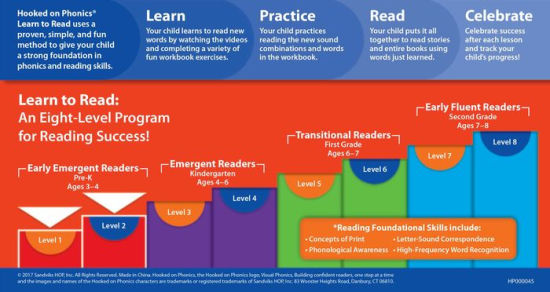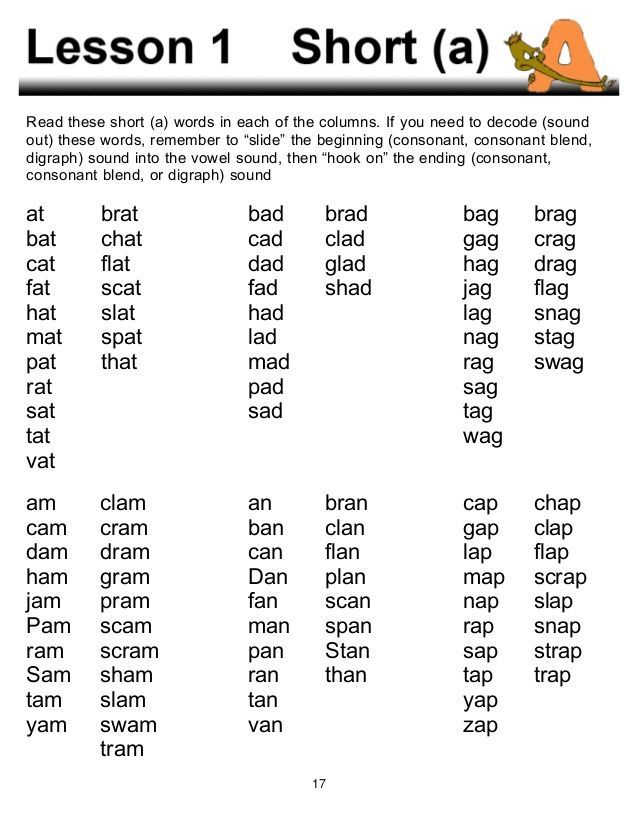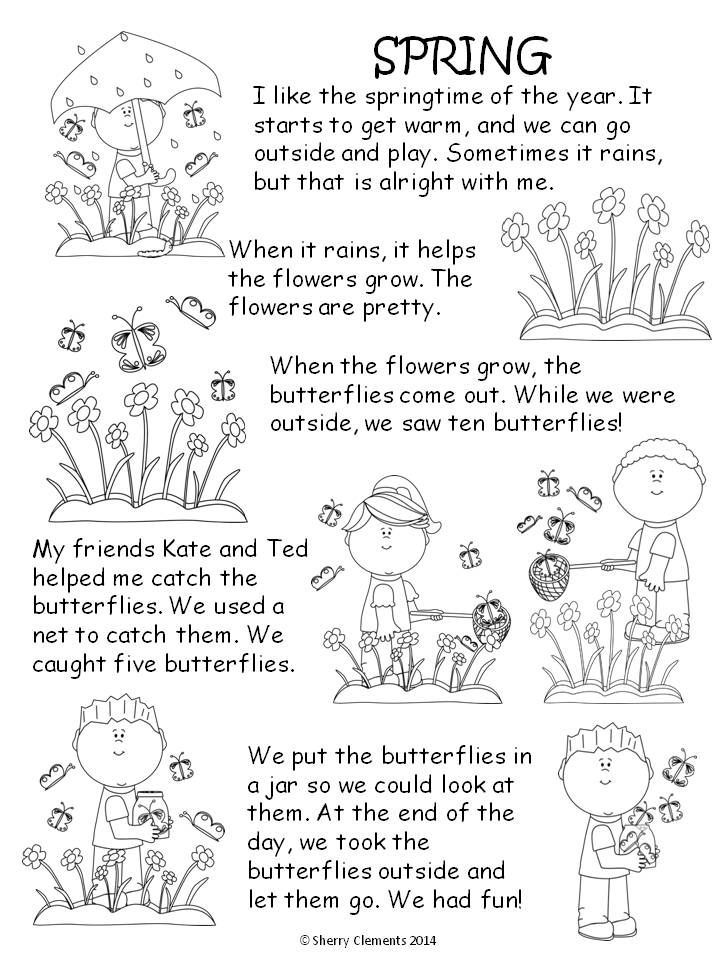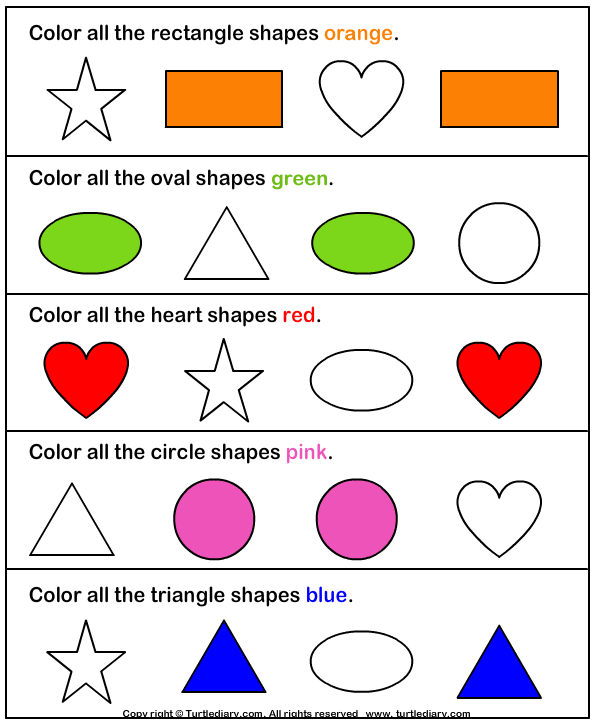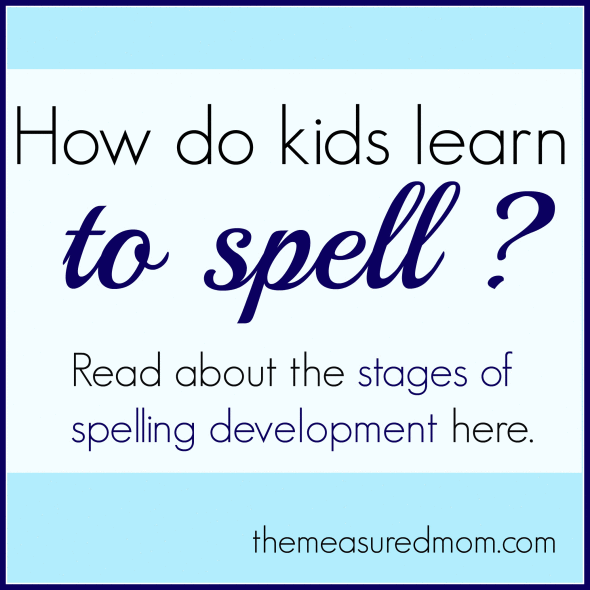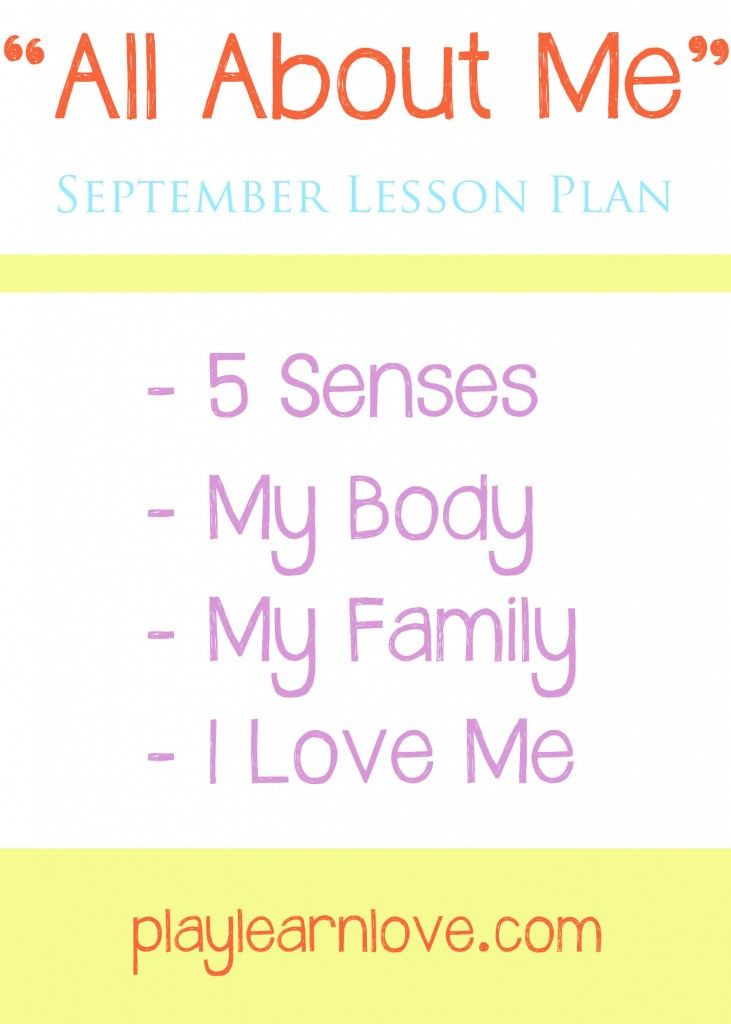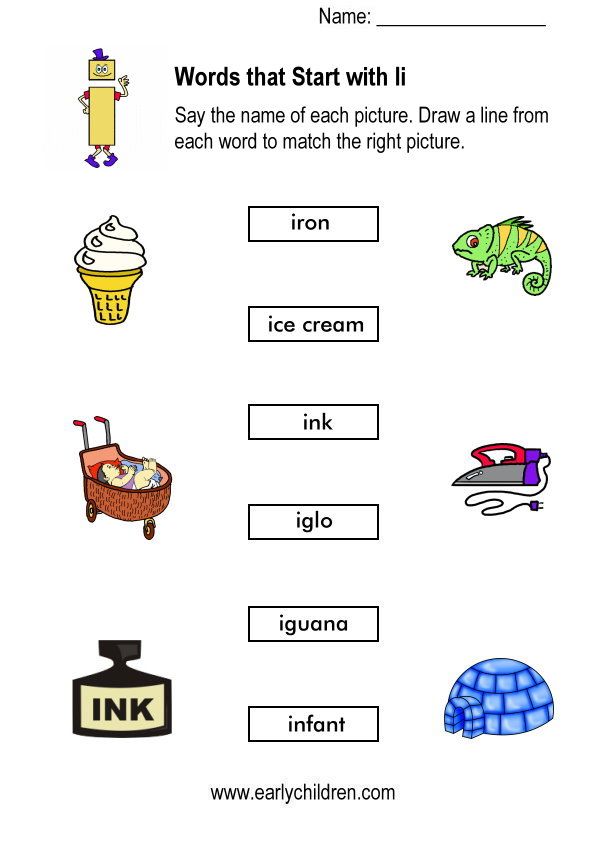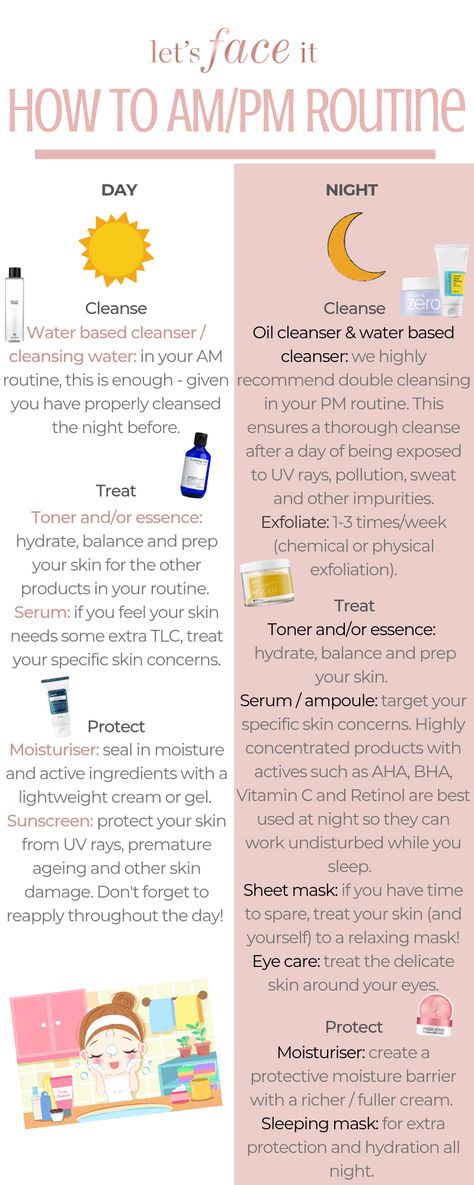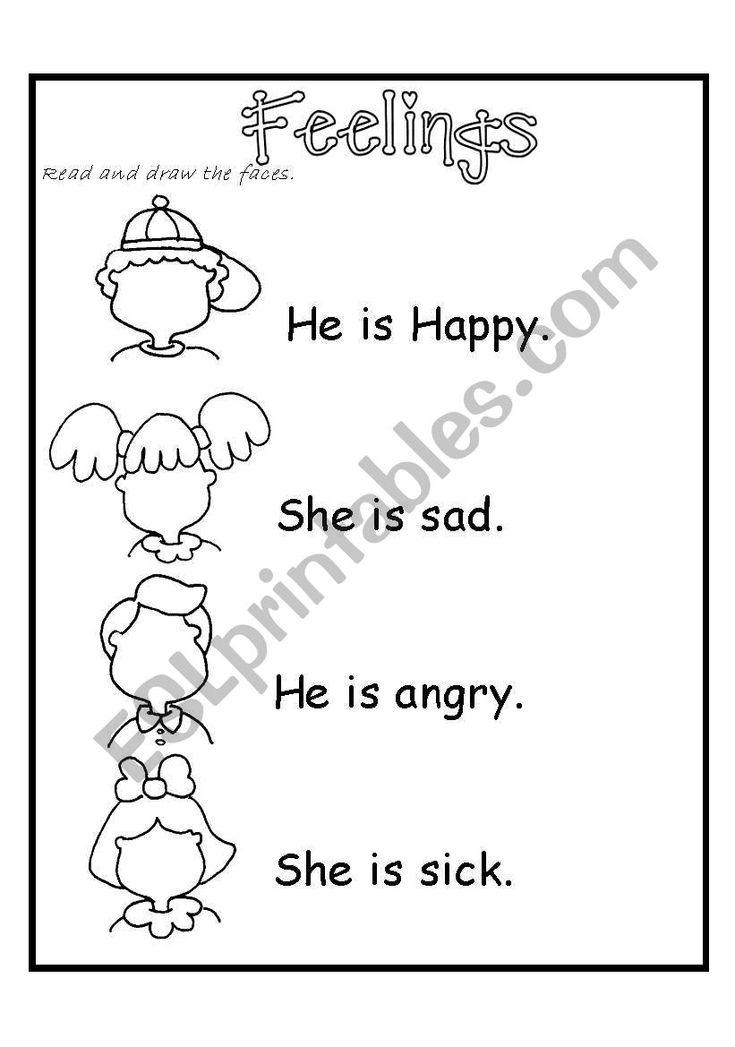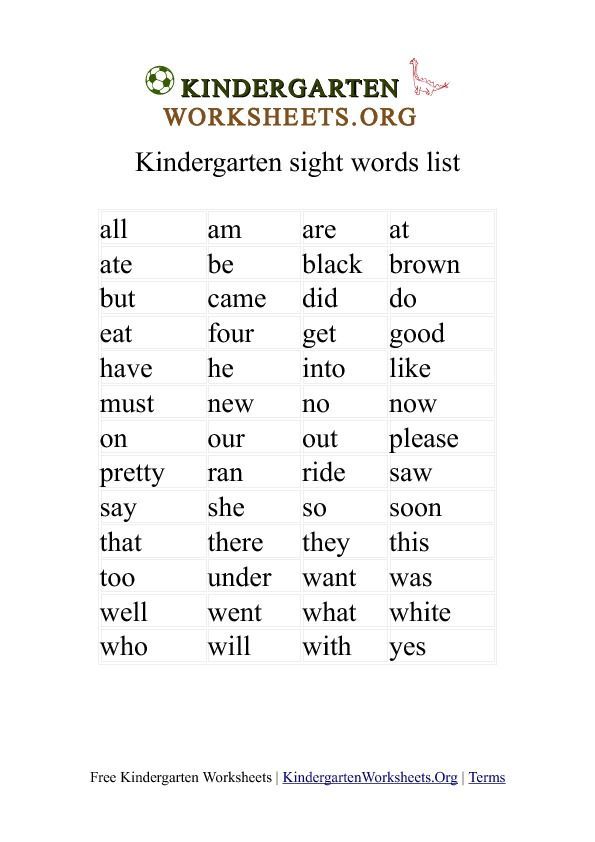High frequency words practice
High Frequency Words (15 Fun Sight Word Activities)
Table of Contents
- 1 What are High-Frequency Words
- 2 Why are Sight Words Important
- 3 Activities to Practice High Frequency Words
- 4 Free Sight Word Printable
- 5 High Frequency Word List
Some of the links in this post are affiliate links. This means if you click on the link and purchase the item, I will receive a small commission at no extra cost to you. All opinions remain my own.
Let’s talk about what high frequency words are, and how to have fun learning them. Whether you are looking for activities to do at home or in the classroom, these games for high frequency words will help your reader build fluency, reinforce high frequency words, and engage them with hands-on reading strategies.
What are High-Frequency Words
High frequency words, also referred to as sight words, are the most common words in the English language . According to Reading A-Z, 50 percent of all text is composed of high frequency words.
Why are Sight Words Important
Sometimes known as sight words, high frequency words are important to learn to become a fluent reader. A reader’s fluency is composed of their speed, accuracy, and expression.
If the kids become stuck on sounding out word by word, they will lose comprehension. Therefore, by learning to read these most commonly used words in text (high frequency words) by memorization, emergent readers will instantly recognize these words and increase their speed and accuracy.
Activities to Practice High Frequency Words
As a former kindergarten teacher, parents often ask me “How do I teach my 5 year old sight words?”, and “How can I make learning sight words fun?” The truth is there are many ways to make learning to read fun.
These sight word activities will engage kids in a multi-sensory approach to learning how to read. Both parents and teachers will see that fun sight word games are at their fingertips with many of these household items.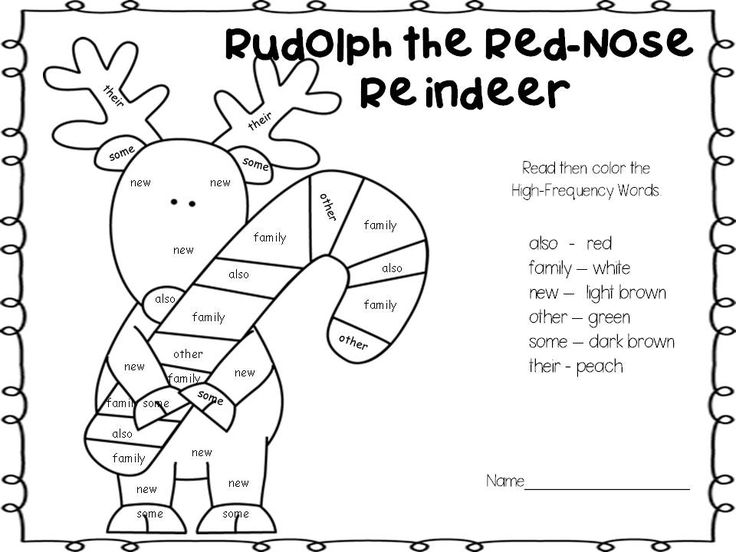
1. Sight Word Superstars
Your kids will become “Sight Word Superstars” with these printable activities. Each sheet has the kids practicing their high frequency words 6 different ways!
First, you get to choose which set if best for your kids. Then, they will trace, write, find and circle, tap and read, use in a sentence, and build the word!
Get the Sight Word Superstars HERE or on TPT
2. Popsicle Stick Sight Word Game
Write the sight words on Popsicle sticks. Write “DYNAMITE” on a couple sticks. Put them in a jar. Pull them out
one-by-one, read the word. If you pull dynamite, you have to put them all back in the jar.
I used this game often as a reading tutor for kindergarten, first, and second grade. We would play in a small group, but this is also great as a time filler for the whole class.
3. Write the Words in Salt
Writing the words in sand is a great sensory-based strategy to practice high frequency words.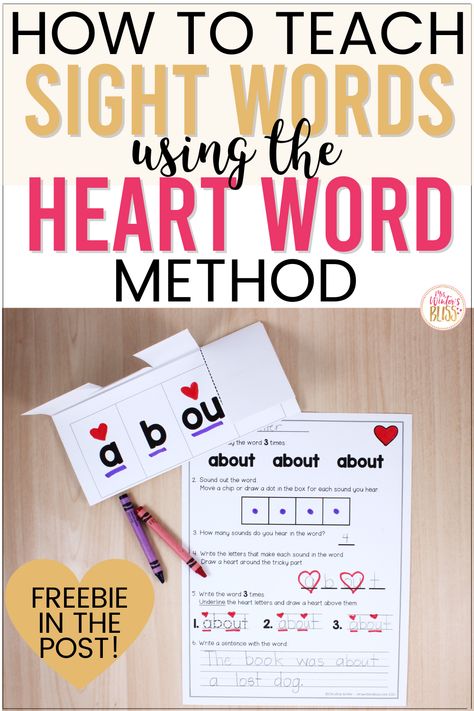 Pour some salt into a small cookie sheet, and let the kids use their finger to write the word.
Pour some salt into a small cookie sheet, and let the kids use their finger to write the word.
4. Magnetic Letter Sight Words
Spelling sight words with magnetic letters is a simple hands-on approach to reading.
You can build high frequency words on a file cabinet, refrigerator, on a magnetic dry-erase board, or without a magnetic surface. Simply lay the magnetic letters out on a table to spell the sight words.
The kids can pull from a collection of sight word cards, and build the word using the magnetic letters, and write the word. This awesome magnetic letter kit, posted in my classroom must-haves, comes with foam magnetic letters already sorted and labeled. a magnetic dry-erase board, letter cards, dry-erase markers, and fun holiday magnets.
5. Sight Word Hunt with Nursery Rhymes
Did you know children who are frequently exposed to nursery rhymes early on, are much more likely to develop strong reading skills? It’s true! This is why I use nursery rhymes to teach kids how to read.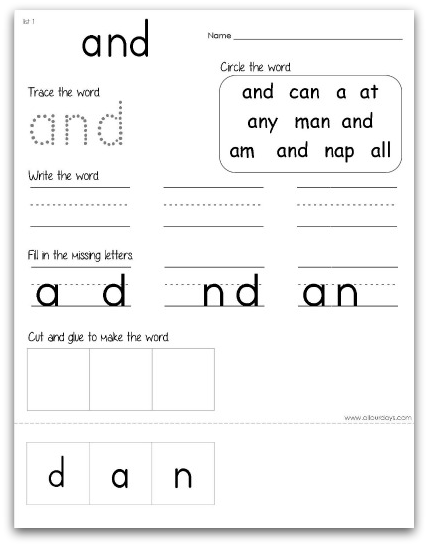 You can read more on my post about popular nursery rhyme songs for kids.
You can read more on my post about popular nursery rhyme songs for kids.
After introducing a new printable nursery rhyme, let the kids hunt through and highlight the sight words you are focusing on.
6. Sight Word Tic-Tac-Toe
Add a twist to a classic game. Let the kids pull a sight word card. Then, they read it, use it in a sentence or spell it before adding an X or O to the board.
7. Sight Word War
Playing with a partner, use 2 stacks of sight word cards, each player flips over a card. Whoever reads the sight word first keeps the cards. If they flip the same word card, it’s War! Then, they lay 2 facing down, and the third one flipped up. Whoever reads that third one fastest, wins that pile. In the end, the kid with the most card, wins.
8. Use Wikki Stix
The kids love using Wikki Stix to make words, numbers, and shapes. Why not let them use Wikki Stix to make the sight words?
9.
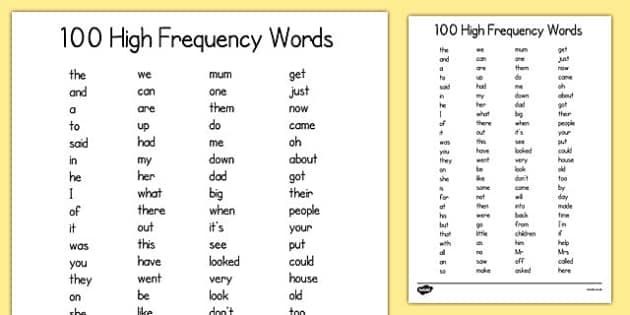 Shaving Cream Sight Words
Shaving Cream Sight WordsWrite the high frequency words in a dab of shaving cream on the table. Shaving cream writing is excellent for sensory based interventions.
Using shaving cream for spelling words and writing sight words are just a few of the shaving cream activities for kids who are kinesthetic learners. You can also make shaving cream playdough and have the kids make the words with that.
10. LEGO Sight Word Game
Use dry erase markers to write sight words on the side of legos, and place them in a pile. Call out a word, have your child find the lego with that word, and add to the tower. There are endless sight word lego activities for kids.
If your child is doing well at recognizing the sight words, but has difficulty spelling them, you can write individual letters on the legos and have them build the word.
You will want to use the large Mega Blocks if writing the whole word, such as the ones used for my pictures. The standard lego size is too small.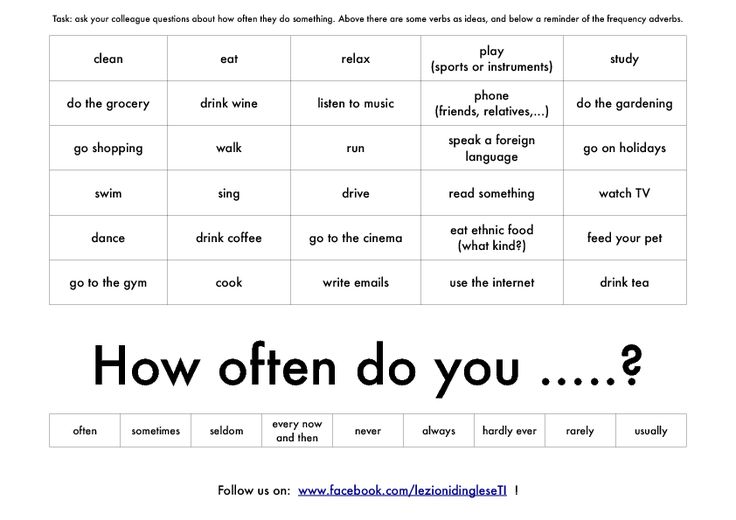 Did you know LEGOS are on my list for the 10 Best Learning Toys for Kids?
Did you know LEGOS are on my list for the 10 Best Learning Toys for Kids?
11. Flashlight Tag With Sight Words
Hang sight words around the house, or in the classroom. Then, turn off the lights, call out a sight word, and have your little learner find it with a flashlight.
12. Sight Word Tallies
Write 5 sight words on a piece of paper. Search through books and magazines, and put tally marks next to the words as you find the words.
13. PlayDoh Sight Words
Use playdoh to form the letters and build the sight words. In the video below, you will see how my first grade students used playdough to make high frequency words. After they form the word, they trace it with their finger, then use the word in a sentence. As a follow up, have your kiddos write the sight word, or write a sentence using the sight word.
14.
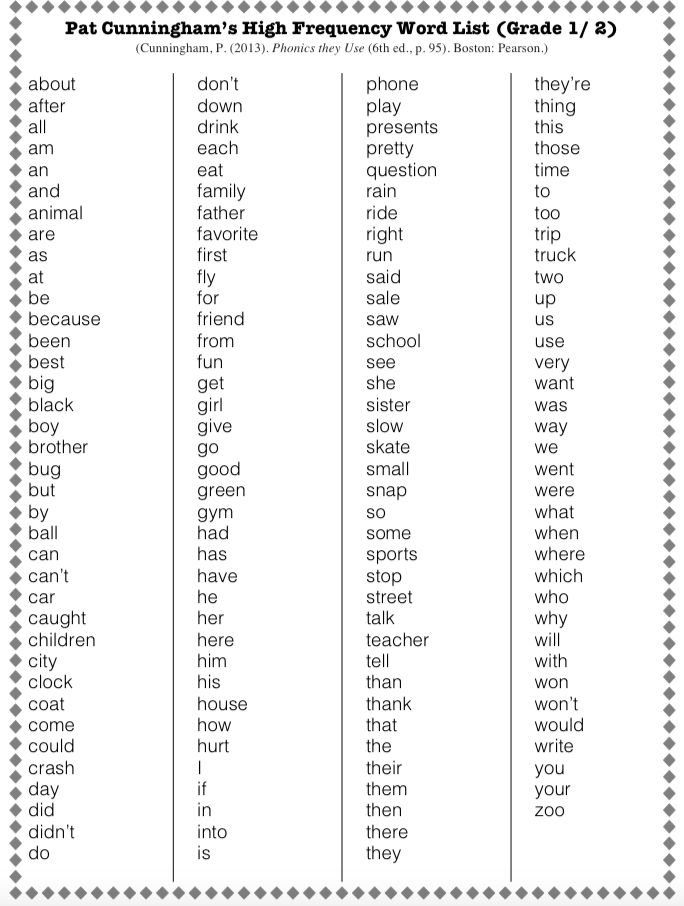 Play I Have, Who Has
Play I Have, Who HasI Have Who Has is a fun way to practice any skill. In this case, the kids can practice reading sight words with family members, in a small group, or in a whole class setting.
The kids read the high-frequency word on their card, then ask who has the word printed on the bottom half of their card. The video below is a demonstration of I Have, Who Has being played in a small group.
You can choose from the following printable I Have, Who Has games below:
- Pre-Primer Sight Words I Have, Who Has
- Primer Sight Words I Have, Who Has
- First Grade Sight Words I Have, Who Has
15. Use Traditional Flashcards
You can also print a set of sight word flashcards, or write the words on index cards, and review 5-10 a night.
Free Sight Word Printable
Teaching kids how to read requires patience and daily practice. Parents often want to help at home, but aren’t sure what to do. You can get this free letter as a reminder of how to help kids with sight words at home.
Grab your FREE Parent Letter for Sight Words, HERE.
High Frequency Word List
If you look over an elementary school’s curriculum, you may find they have a list of words per grade level, along with reading materials, word rings, class books, and more for the young children to use.
Typically, there are two major lists of common sight words young readers will learn from. They are the dolch words and fry words.
Dolch Words
Pre-Primer: the, to, and, a, I, you, it, in, said, for, up, look, is, go, we, little, down, can, see, not, one, my, me, big, come, blue, red, where, jump, away, here, help, make, yellow, two, play, run, find, three, funny
Primer: he, was, that, she, on, they, but, at, with, all, there, out, be, have, am, do, did, what, so, get, like, this, will, yes, went, are, now, no, came, ride, into, good, want, too, pretty, four, saw, well, ran, brown, eat, who, new, must, black, white, soon, our, ate, say, under, please
First Grade Words: of, his, had, him, her, some, as, then, could, when, were, them, ask, an, over, just, from, any, how, know, put, take, every, old, by, after, think, let, going, walk, again, may, stop, fly, round give, once, open, has, live, thank
Second Grade Words: would, very, your, its, around, don’t right, green, their, call, sleep, five, wash, or, before, been, off, cold, tell, work, first, does, goes, write, always, made, gave, us, buy, those, use, fast, pull, both, sit, which, read, why, found, because, best, upon, these, sing, wish, many
Fry List of Words:
Fry words, unlike the Dolch list, are not broken down into grade level.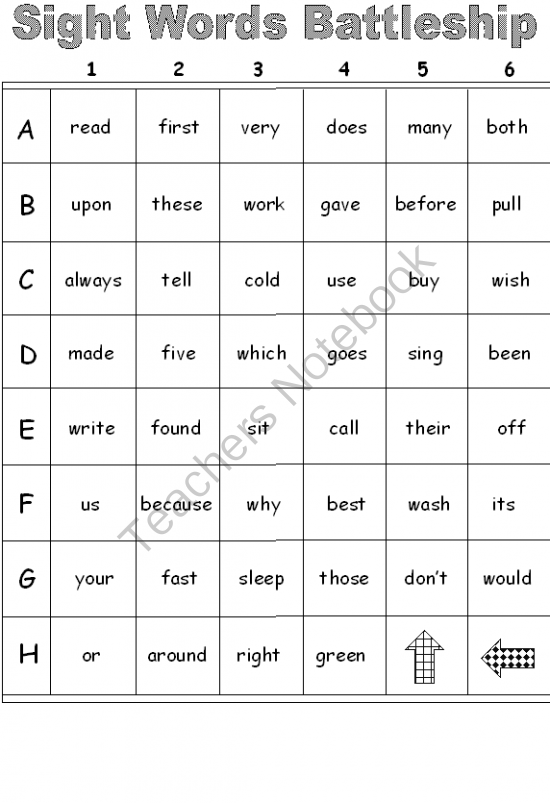 The kids, however, are introduced to new words after mastering each group of 100. This does not mean young children are expected to learn 100 instant words at once. Most often, the teachers break down the expected amount of words to learn in groups of 5-10 at a time, week after week.
The kids, however, are introduced to new words after mastering each group of 100. This does not mean young children are expected to learn 100 instant words at once. Most often, the teachers break down the expected amount of words to learn in groups of 5-10 at a time, week after week.
Fry’s First 100 Words: the, of, and, a, to, in, is, you, that, it, he, was, for, on, are, as, with, his, they, I , at, be, this, have, from, or, one, had, by, words, but, not, what, all, were, we, when, your, can, said, there, use, an, each, which, she, do, how, their, if, will, up, other, about, out, many, then, them, these, so, some, her, would, make, like, him, into, time, has, look, two, more, write, go, see, number, no, way, could, people, my, than, first, water, been, called, who, am, its, now, find, long, down, day, did, get, come, made, may, part.
You can search for the remaining words,- they are known as the second and third lists. The Fry and dolch sight words increase in difficulty as the kids get older.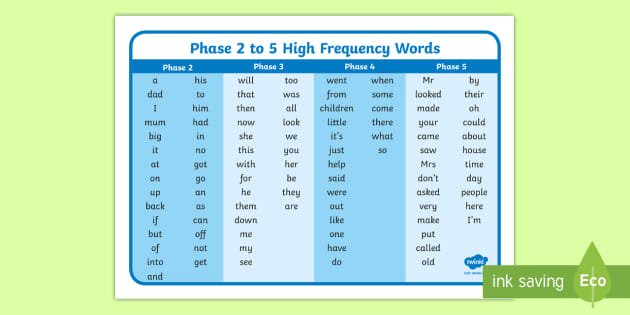
Before you go, here are some blog posts you may enjoy:
20 Basics of a Kindergarten Classroom
122 Best Knock Knock Jokes Kids Love
34 Best Nursery Rhymes for Kids
15 Amazing Benefits of Math Talks with Kids
25 Printable Kindergarten Vocabulary Worksheets
High Frequency Words
48 Fun Sight Word Activities That Work
Teachers are always on the hunt for great sight word activities. Sight words are any words readers recognize automatically “by sight”—for fluent readers, that’s almost all words! High-frequency words, the most commonly occurring words in written English like those on the Dolch list, are often thought of as the most crucial sight words.
It’s a myth that blindly memorizing every letter in a sight word is the only way to learn it. The science of reading tells us that linking sounds and letters is the most effective way for kids’ brains to learn any word. Many common words are easy to tackle using beginning phonics skills (like “at,” “can,” “him,” etc. ), so staying true to a strong phonics curriculum is one way to support kids’ sight word learning. Even irregularly spelled words have decodable parts, e.g., kids can use the sounds of “s” and “d” to help with “said,” even if the “ai” is unexpected. Experts often call these words “heart words” to call out for kids that they should learn the unexpected word parts “by heart.” (If all this is unfamiliar to you, it can feel overwhelming, but you’ve got this! Check out teaching guru Jillian Starr’s explanation for more help.)
), so staying true to a strong phonics curriculum is one way to support kids’ sight word learning. Even irregularly spelled words have decodable parts, e.g., kids can use the sounds of “s” and “d” to help with “said,” even if the “ai” is unexpected. Experts often call these words “heart words” to call out for kids that they should learn the unexpected word parts “by heart.” (If all this is unfamiliar to you, it can feel overwhelming, but you’ve got this! Check out teaching guru Jillian Starr’s explanation for more help.)
ADVERTISEMENT
Check out these low-prep and engaging sight word activities for both teaching and practicing words.
1. Map it and drive it
This is a genius way to introduce words with appealing materials: Say the word, represent each sound with a LEGO brick, write letters for each sound, and “drive” to read it.
Source: @droppinknowledgewithheidi
2. Smush play dough for each sound
Set up a routine that works for any word.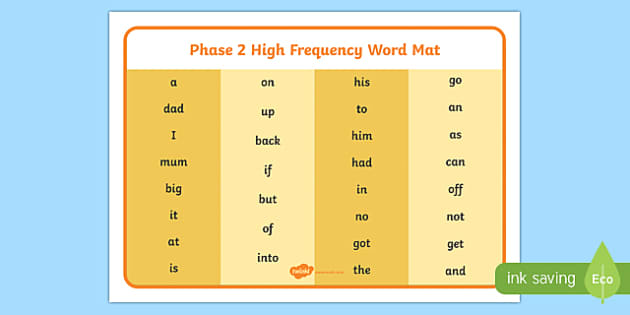 Play dough squishing for each sound is the ultimate multi-sensory component.
Play dough squishing for each sound is the ultimate multi-sensory component.
Source: @playdough3plato
3. Map words with a magnet wand
It is so super-satisfying to drag those magnetic dots around! Watch the video below for lots of tips on introducing a word using this process.
Source: @warriorsforliteracy
4. Make a mini book
Lots of handy info in one place for your little learners.
Source: @hughesheartforfirst
5. Tap it, pop it, learn it!
Hardwire those words in kids’ brains with this comprehensive word intro routine. (You had us with the pop its!)
Source: @hellojenjones
6. Find and swat words
An oldie but such a goodie. Find a word in an array and WHACK! Swat it with a fly swatter!
Source: @kids_play_learn_laugh
7. Flip word pancakes
Serve up sight word pancakes while practicing spelling them aloud.
Source: @bee_happy_teaching
8. Wear heart word bracelets
Make kids feel like sight word VIPs.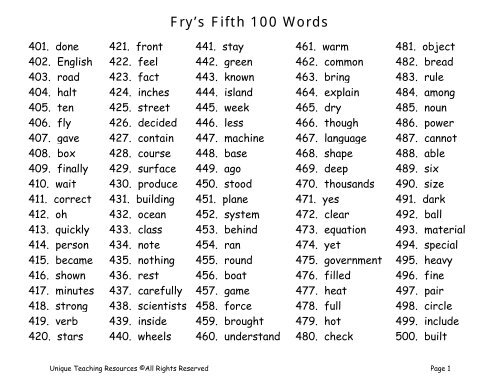
Source: @teachingmoore
9. Search for sight word balls
Write sight words on ball pit balls with a chalk marker or dry-erase marker. Kids can race around hunting for balls to read and toss in a basket, or hunt through a big tub of balls for a certain word.
Source: @preschoolforyou
10. Start a sight word band
Loud but oh-so-fun! Feel the rhythm while tapping and reading sight words stuck to homemade percussion instruments.
Source: @earlyyears_withmrsg
11. Drive on a sight word path
This is one of many fun ways to use magnetic tiles for learning! Kids love “knocking down” word tiles with a toy car as they read each one.
Source: @travisntyler
12. Use sticky notes to inspire sight word sentences
Have kids stick words on items that give them ideas for sentences. “My Mom said to wear a helmet!” = so good!
Source: @kinneypodlearning
13. Write words on a sensory bag
So easy: Fill a zip-top bag with a small amount of kid-safe paint, seal well, and have kids practice “writing” sight words with their finger or a cotton swab.
Source: @makeitmultisensory
14. Wear a sight word crown
Wear your word proudly and practice reading others’ words. Fun in person or virtually.
Source: @mrsjonescreationstation
15. Play a magnetic-tile board game
We love new ideas for ways to use magnetic tiles for sight word activities. Easy to set up and fun to play.
Source: @twotolove_bairantwins
16. Spell words to a familiar tune
Get sight words stuck in everyone’s head, in a good way. We’d add a line for chanting the sounds in the word!
Source: @saysbre
17. Feed a word monster
Nom, nom, nom.
Source: @ecplayandlearn
18. Search for the pom-pom under sight word cups
Read all the words as you try to find the cup that hides the prize.
Source: @la.la.learning
19. Play sight word KABOOM
This classroom classic is perfect for sight words. If you need a refresher on the rules, Jillian Starr covers them.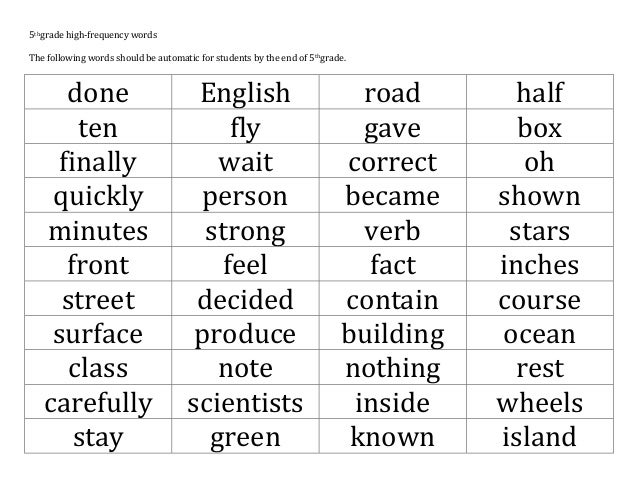
Source: @essentiallykinder
20. Roll and write words
Roll, write, repeat.
Source: @mylittlepandamonium
21. Write words with rainbow colors
Bonus points for aromatic markers.
Source: @mylittlepandamonium
22. Trace words with flashlights
Stock up on batteries because kids never get tired of this!
Source: @giggleswithgerg
23. Find words in plastic eggs
Give kids a checklist of words to find as they open each egg.
Source: @blooming_tots1
24. Spy words around the classroom
Just add a magnifying glass and clipboard to make kids feel like supersleuths!
Source: @readingcorneronline
25. Find words in the morning message
Don’t forget about old standbys! This is one of our favorite ways to get kids to recognize sight words in connected text.
Source: @tales_of_a_kinder_classroom
26. Build words with bricks
Such a great use of extra building bricks!
Source: @raysinkinder
27.
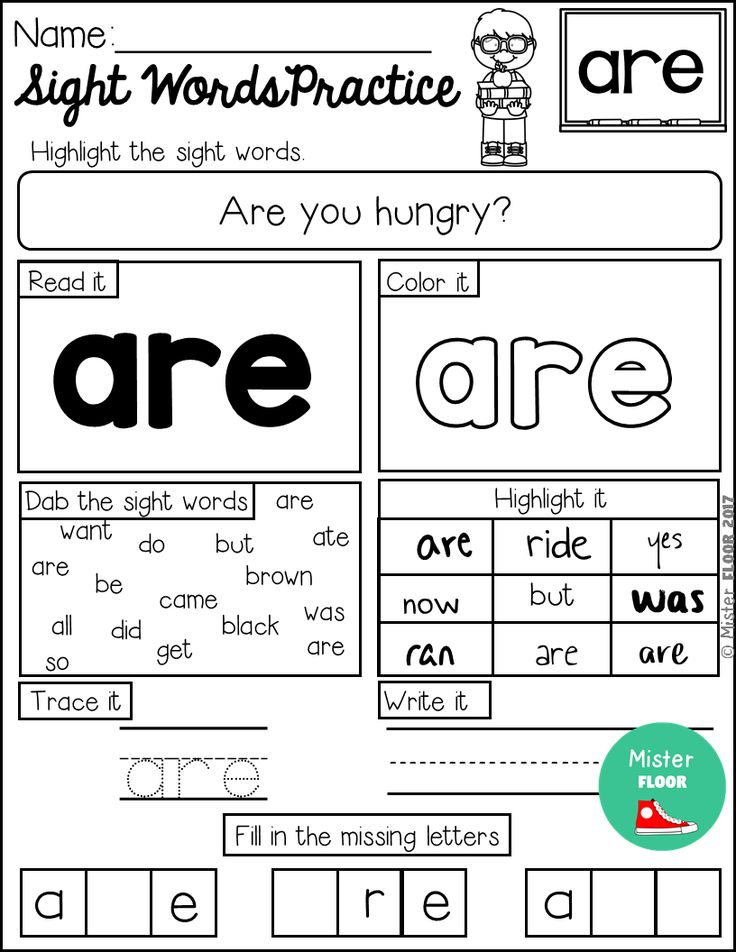 Write words in sand
Write words in sandEasy-peasy to set up and keep neat if you use plastic pencil boxes.
Source: @teacherhacks
28. Spell words on a construction site
Bulldozing over each word to read it is the best part!
Source: @planningplaytime
29. Spell words with toy cars
Drive on over!
Source: @lozlovesprep
30. Park in a sight word “parking lot”
This one is easy to modify based on whatever toys are available in the classroom or at home.
Source: @msbendersclassroom
31. “Plant” words in play dough
Watch those reading skills grow!
Source: @planningplaytime
32. Build words in a sensory tub
Because spelling is just more fun when your hands are covered in beans!
Source: @coffeeandspitup
33. Write words on a magnetic drawing board
That eraser track makes for a perfect word card holder!
Source: @moffattgirls
34. Or write words on the window!
Everyone wants a turn to write on the window!
Source: @kindergarten_matters
35.
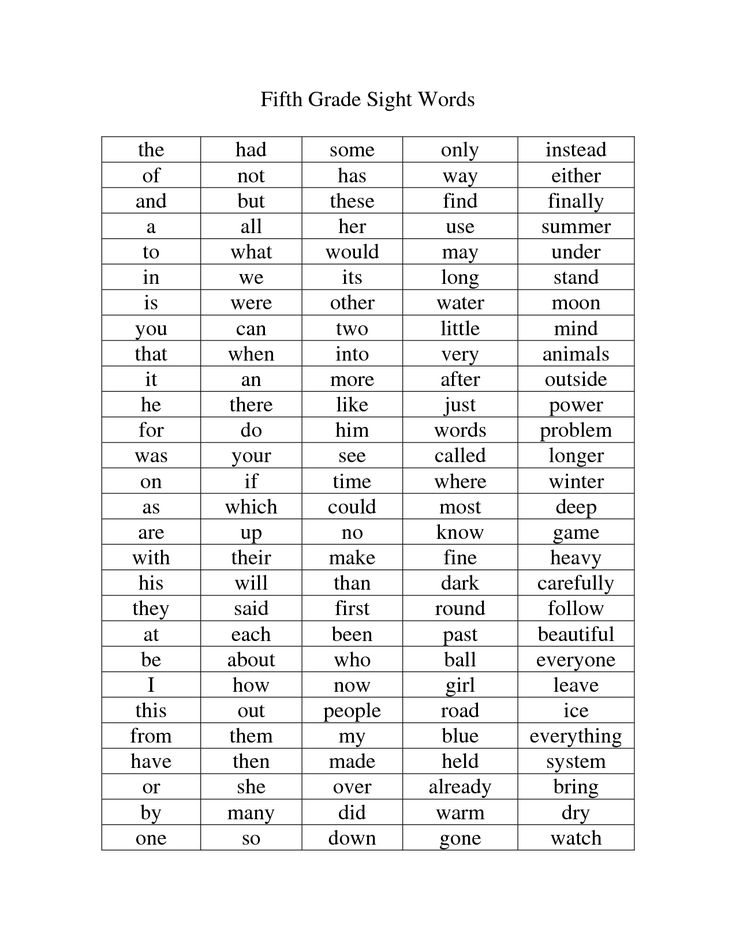 Shhh! Discover words written in invisible ink
Shhh! Discover words written in invisible inkWrite words in white crayon and reveal them with watercolors on top!
Source: @teachstarter
36. Dot-paint words with a cotton swab
Calming and effective.
Source: @sightwordactivities
37. “Type” words on a keyboard
Busy day at the sight word office! Use a keyboard cover or any old keyboard.
Source: @lifebetweensummers
38. Read words before heading through the door
The line leader can double as the word pointer during transitions.
Source: @ms.rowekinder
39. Read the word the teacher’s wearing!
Wait, is there something on my shirt?
Source: @theprimarypartner
40. Take a sight word cakewalk
Choose a winning word when the music stops!
Source: @joyfulinkinder
41. Play sight word hopscotch
If you can’t get outdoors, tape on the floor works just as well.
Source: @wheretheliteracygrows
42.
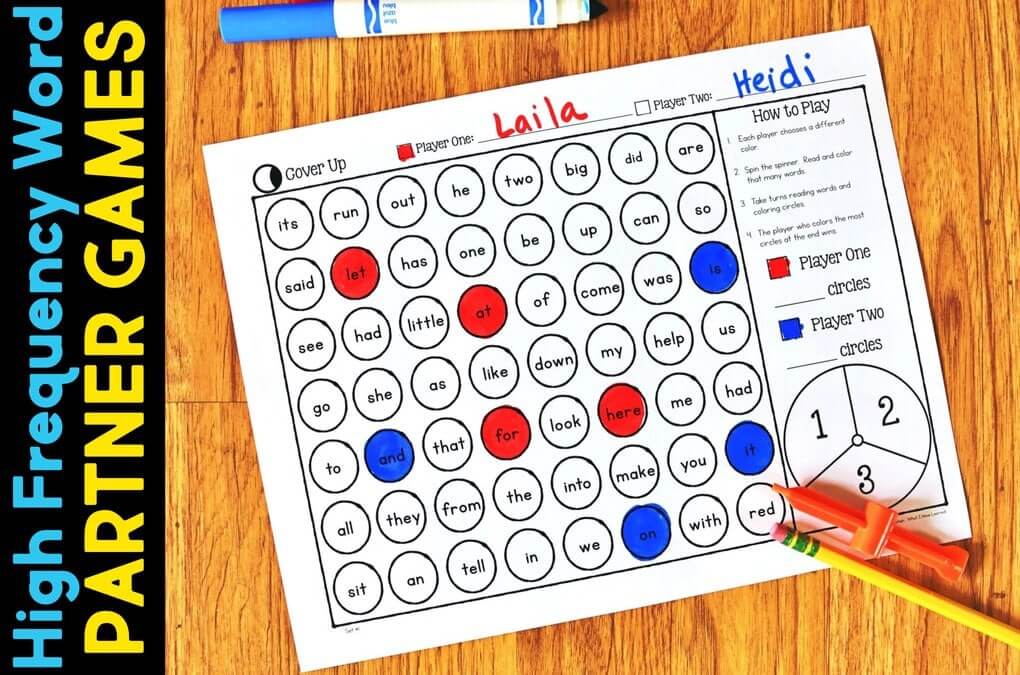 Play tic-tac-toe
Play tic-tac-toeI’ll be team “the.”
Source: @create_n_teach
43. Go sight word bowling
No bowling pins? Use half-filled plastic water bottles instead.
Source: @thecreativeteacher_
44. Ready, aim, read
Just throw a beanbag at a word target if foam darts are a no-go.
Source: @laurens_lil_learners
45. Play muffin tin ball toss
Toss and read. It’s easy to use colored muffin cups to prep different sets of words.
Source: @homeschooling_fun_with_lynda
46. DIY sentence flash cards
Authentic use of words in context for the win.
Source: @teachertipsandtales
47. Play sight word checkers
King me! If kids don’t have a partner available, they can “play” with a stuffed animal and get double practice.
Source: @sightwordactivities
48. Play sight word Guess Who?
Set up this game once and use it forever.
Source: @lessons_and_lattes
We’d love to hear—what are your favorite sight word activities? Share in the comments below.

Want more articles like this? Be sure to sign up for our newsletters.
Plus, what are sight words?
how to quickly learn English words
Have you ever learned a set of new words in English, repeating them several times, listening to the transcription and looking at usage examples, but when you need to remember this word after some time, it does not pop up in head instantly? It seems to be “spinning on the tongue”, but it’s impossible to remember for sure.
Regular vocabulary replenishment and the study of thematic vocabulary is the key to a rich English language. But here's how to make sure that new words are deposited in memory for a long time?
Today we will share the secrets of how to learn and easily memorize English words.
How many words you need to know
Before talking about techniques and techniques for memorization, I would like to say that learning English words and learning English is not the same thing.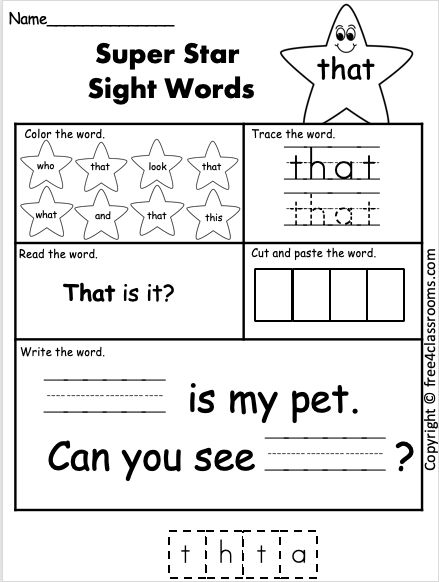 After all, the language is alive, it uses the rules of grammar, and the translation of the same word may vary depending on the context.
After all, the language is alive, it uses the rules of grammar, and the translation of the same word may vary depending on the context.
So even if you memorize ten thousand words from the Oxford Dictionary, there will be no sense if you cannot use them in live speech.
Naturally, the standards for word proficiency for a native speaker and for an English as a foreign language learner are very different.
The average active vocabulary of an English speaker, which he regularly uses in everyday life, is from 10,000 to 20,000 words. But the passive stock can be from 50,000 to 100,000 words.
For those who study English as a foreign language, the numbers are quite different. So, for a general understanding of oral speech and superficial communication, knowledge of about 1000 high-frequency words will be enough. 3,000-4,000 words are enough to keep a conversation going on general topics and watching simple movies and series. But if you want to understand up to 100% of speech, you will need a supply of about 20,000 words.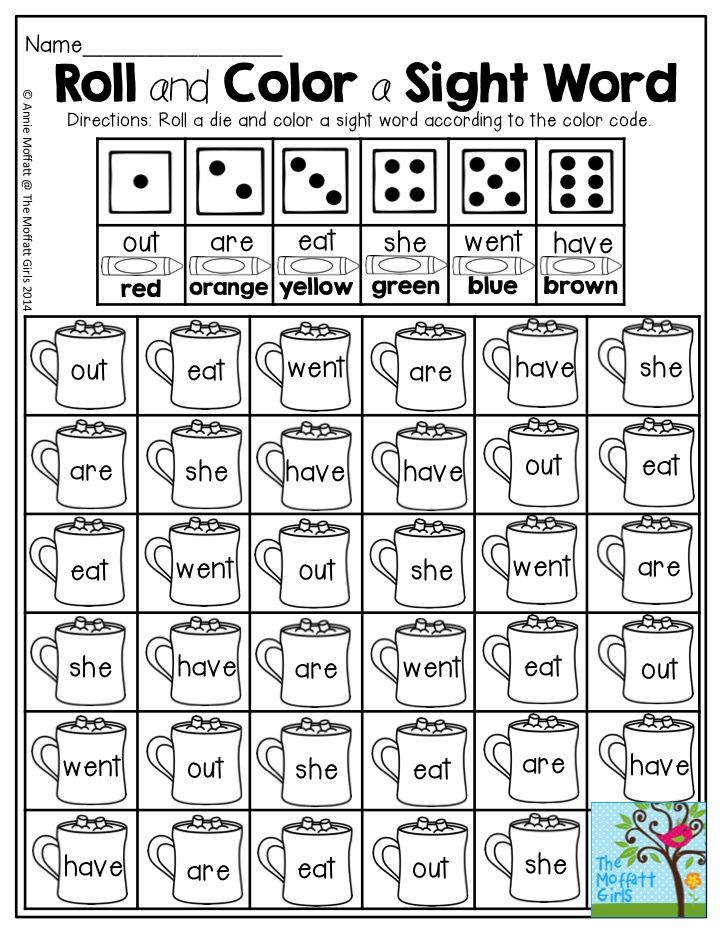
You can test your vocabulary with a special test: Vocabulary test. His results are pretty accurate, especially if you answered honestly.
The number of words learned does not guarantee that you will communicate freely. It is important to approach vocabulary replenishment wisely: not to cram everything in a row, but to concentrate on the most frequently used words and thematic vocabulary.
Start with basic topics such as family, home, work, city, weather, animals, food, travel, and so on.
The most frequently used words in English are called high frequency. You can take new vocabulary from ready-made lists of such words - then you will quickly master colloquial speech and be able to start applying new knowledge as early as possible.
Learning all the available sets of words is simply pointless. It is unlikely that you will need advanced medical terminology, unless you are going to build a career in the field of medicine. Similarly, if you need special words on a narrow topic, learn them.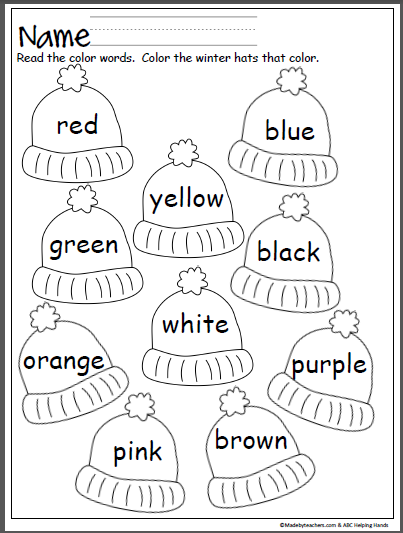 It is not necessary to know by heart all the terms and special vocabulary if you do not apply it in life.
It is not necessary to know by heart all the terms and special vocabulary if you do not apply it in life.
Where to get new English words
The main source is thematic vocabulary. On the Internet and in teaching aids, you will find enough sets of words for different levels.
There are also special textbooks for increasing vocabulary and dictionaries of the most high-frequency words.
Progress does not stand still: many new words and slang expressions have appeared recently, and some have fallen into disuse. Keep your finger on the pulse and write down new words as you encounter them in TV series, movies, articles, podcasts and the media.
By the way, movies, series, articles and books are a great source of new words. Regular viewing of videos with subtitles is good because unfamiliar words are used in an interesting context for you, which means they are remembered faster. The same rule applies to printed materials: find articles on the topic of your profession or area of interest, and also read your favorite books in the original.
How to quickly learn and remember English words
Flashcards
The method of memorizing new words using cards has been used for a long time, but it does not lose its relevance. It is convenient and accessible to everyone. The meaning is simple: on one side of the card you write the word in English, and on the other side you write the translation. You can make cards yourself with only the vocabulary that you need, or use ready-made thematic sets.
For best effect, choose cards with pictures. Visually, we remember information much easier, and in the future, the word will quickly come to mind if you just remember the picture.
Today, instead of ordinary paper cards, there are many mobile applications and web-based memorization simulators. It is enough to download the application to your smartphone. So the necessary virtual cards will always be at hand. The application itself will remind you which words you have already learned and which are worth looking at again, and will offer material for repetition.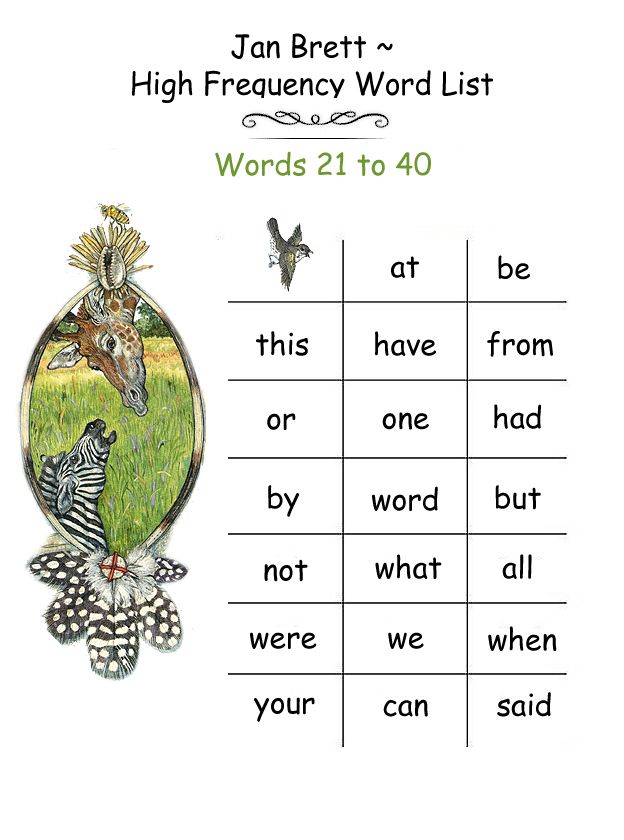
Notepad
The good old way that is still popular. Write down new words in special notebooks in two columns: word-translation.
The trick is that when you write, you remember not only the translation of a word, but also its correct spelling. Write down frequently used phrases with this word or set expressions here. In the future, with repetition, these phrases will be deposited in your head and will be easily remembered as soon as you imagine the word written in the notebook.
Mindmap
This method is suitable for those who love diagrams and drawing.
Highlight a few words on the subject. For example, house (house). Draw it in the center and make arrows to related words (in our case, rooms in the house). In different parts of the sheet, write: bathroom (bathroom), living room (living room), bedroom (bedroom), dining room (dining room). After, for each of the rooms, write a few words that apply to it. For example, bed (bed), pillow (pillow), sheets (sheets) - to the bedroom, and shower (shower), towel (towel), mirror (mirror) - to the bathroom.
For example, bed (bed), pillow (pillow), sheets (sheets) - to the bedroom, and shower (shower), towel (towel), mirror (mirror) - to the bathroom.
Mentally following this visual pattern, it will be easier for you to remember the words that belong to a particular category.
Rules for memorizing new words easily
Here are some useful tips and principles for those who want to quickly learn English words and not forget anything in a day.
Explore interesting topics
After learning the basic set of words, it is often tempting to learn something "that" in order to shine in a conversation with a foreigner. Yes, there are beautiful words, the use of which in speech can amaze the interlocutor. But, say, why do you need to know the word "lightning" in English if you do not know the word "speed"?
It has been proven that interesting information is better absorbed and remembered much faster. Therefore, learn those words that are in your area of \u200b\u200binterest. Everyone needs a solid vocabulary base, but each of us has our own passions and hobbies, so collect more information on your favorite topic. Do you like sports? Then watch matches, listen to commentators and read articles on this topic. Do you like to photograph nature and travel? Then subscribe to popular bloggers or watch the National Geographic series of programs. Look for new interesting words where they are used.
Everyone needs a solid vocabulary base, but each of us has our own passions and hobbies, so collect more information on your favorite topic. Do you like sports? Then watch matches, listen to commentators and read articles on this topic. Do you like to photograph nature and travel? Then subscribe to popular bloggers or watch the National Geographic series of programs. Look for new interesting words where they are used.
Don't waste time memorizing those words that you rarely use even in your native language.
Learn words in context
It's not enough just to learn a new word - you also need to be able to apply it. Therefore, immediately look at the examples where it was used, in what context, for what purpose, and so on. Try to make up your sample sentences with a new word and find its use in speech. Imagine when and how you might need to use this word: come up with a situation and play it several times.
The golden rule here is to learn to ignore the words you don't need.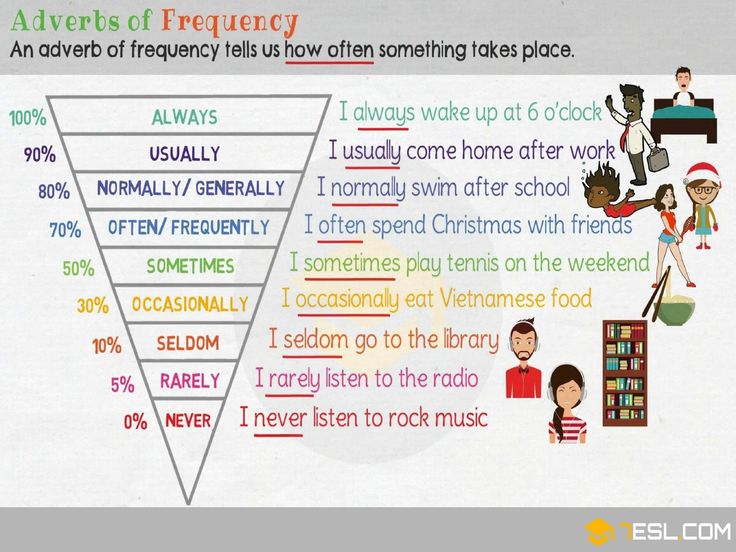 When learning new vocabulary, there is a great temptation to learn it “in a crowd”, and this is not quite the right approach. When you encounter a new word, look through all the options for its use, but remember only the most frequently used ones.
When learning new vocabulary, there is a great temptation to learn it “in a crowd”, and this is not quite the right approach. When you encounter a new word, look through all the options for its use, but remember only the most frequently used ones.
Learn set phrases
Many beginners to learn English make the same mistake: first they build a sentence in Russian in their head, and then translate it. But the norms of our languages are very different, and a foreigner may simply not understand what you mean.
Therefore, along with new words, memorize common collocations and their use in speech. So, “take a photo” in English will be “take a picture”, and not “do a photo”, as many would translate, and “break a record” - “break a record”, and not “beat a record”.
Remember opposites
Opposites not only attract, but are also better remembered. This technique is good to use when memorizing adjectives. For example, it is better to learn words in pairs along with antonyms: good-bad (good-bad), big-small (big-small), happy-angry (happy-evil) and so on.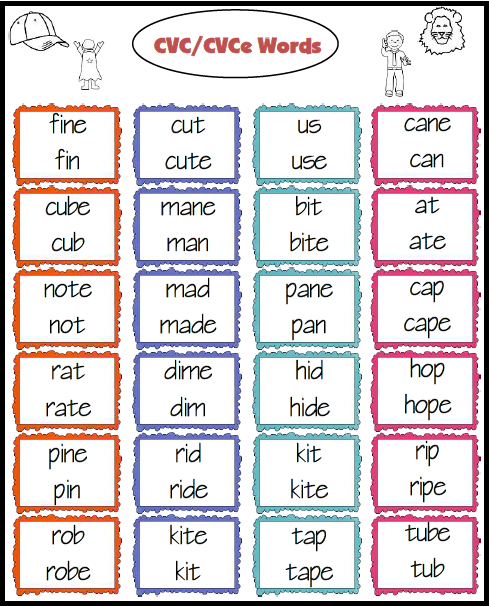
Thanks to this technique, you will be able to remember not only the desired word, but also its antonym, which will immediately pop up in your memory.
Understand difficult words
Many foreign words consist of several simpler ones. Having met a compound word, take it apart and see how they are translated separately. This will help you build associative links and make it easier to remember the word.
For example, the word microbiology (microbiology) consists of two words - micro (small) and biology (biology). It turns out that having analyzed this word, you will learn not one, but three new concepts at once.
You can often guess by analogy how similar words will sound in English. To do this, make a list of common prefixes (un-, dis-, con-, micro-, etc.) and suffixes (-able, -ly, -ent, -tion, -ive, etc.) and remember what they mean. In the future, when you meet a new word, you can easily guess its meaning.
Don't forget grammar
As soon as you come across a new word, you need not only to parse it thoroughly, but also to learn the grammatical rules that correspond to it.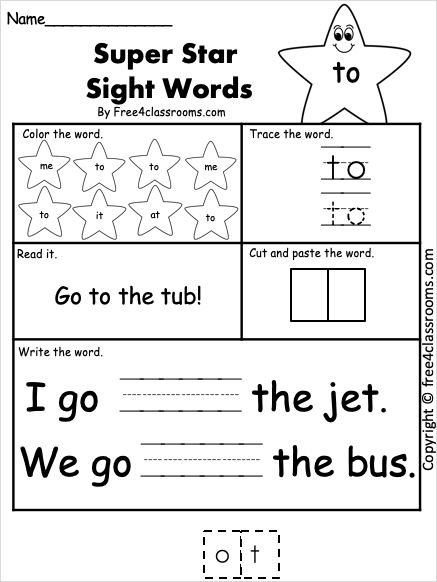 So, a new word may be just a different form of a word you already know.
So, a new word may be just a different form of a word you already know.
Also, learn more verbs and memorize their situational use. For example, having learned the forms of irregular verbs according to the table of tenses, you will no longer know one word, but three.
Use associations
Associative memory is a good thing. It helps to “pull out” the right word from the bins of consciousness without much difficulty. Therefore, when studying, it is good to use flashcards with pictures.
This is especially important for abstract concepts, which are abundant in the language. If you learn words without pictures, imagine them in your head. You can mentally draw a word in the air, give it a color or some form.
By the way, the funnier the association, the faster the new word will be remembered. For example, the word clever is translated from English as “smart”, and in Russian it sounds like the name of a clover plant. Building a sentence: You’re so clever! (You are so smart!), and for a funny association in Russian, imagine it as “Well, you are a clover!”.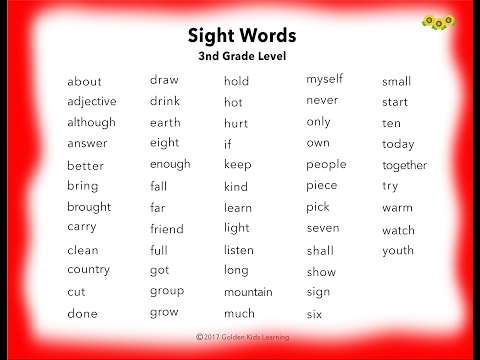
You can even make up a funny story or phrase with a new word. Choose the most unexpected combinations, and you will be surprised how easy they are to remember.
Use new words in speech
As Benjamin Franklin said, “Tell me and I forget. Teach me and I remember. Involve me and I learn ”(Tell me - and I will forget. Teach me - and I will remember. Involve me - and I will learn).
One of the surest ways to quickly remember a new word is to find its use in everyday speech. If you attend courses or study with a teacher individually, use the words you just learned as often as possible. Specially build sentences with new words and do not forget about spelling: use the studied vocabulary in written English.
Make it fun
Above we have already talked about mobile applications and games for memorizing new words. Install this on your smartphone, make a selection of words that interest you and complete tasks regularly. These can be quick games with cards with translation in both directions, composing phrases with words, and so on.
These can be quick games with cards with translation in both directions, composing phrases with words, and so on.
Programs will help you identify words that are especially difficult for you and will focus on learning them.
Don't forget about funny songs or rhymes to remember. Basically, they are used in children's education, but sometimes they help adults. In addition, you can always come up with your own funny rhyme to the word, which activates associative memory.
Consider your type of perception of information
The same methods of memorizing new English words are not equally suitable for everyone. Choose an approach depending on your type of perception. There are three of them: auditory, visual and kinesthetic.
Audiobooks, music or podcasts are suitable for the audience. In order to memorize new words, auditory learners need to read them aloud, repeat and analyze them several times.
Visuals are best suited for the card method, as well as other pictures, tables, and visual aids.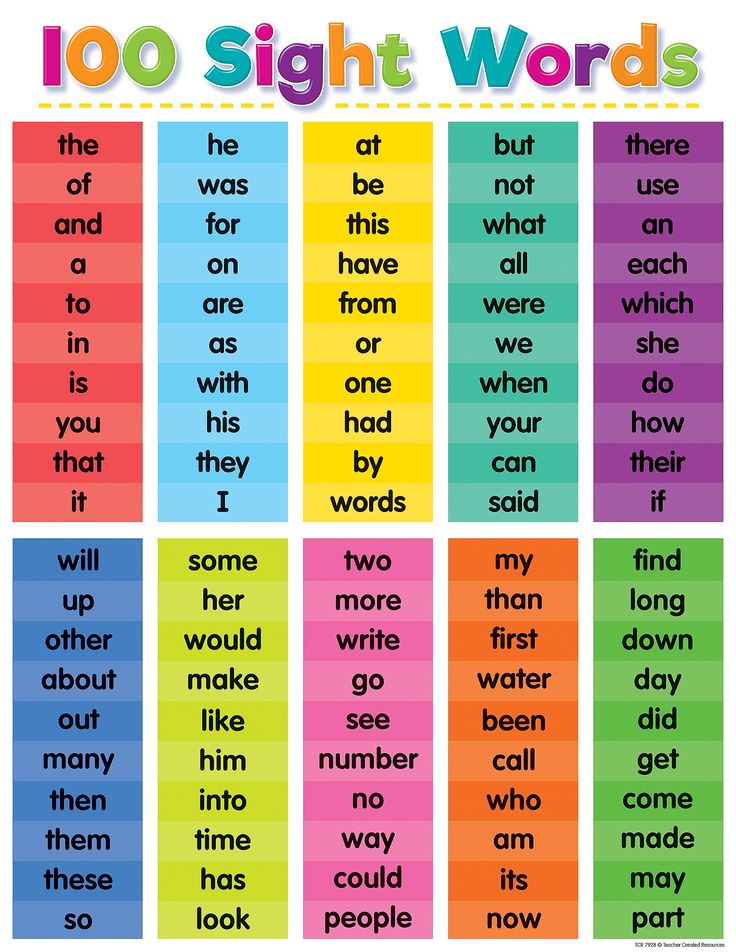 They are better off watching movies and series with subtitles, and also follow the accompanying text when listening to podcasts.
They are better off watching movies and series with subtitles, and also follow the accompanying text when listening to podcasts.
It is easier for kinesthetic learners to memorize new words by writing them on paper. Active gestures come to the aid of this type: imagine a situation when you use a new word and repeat the accompanying hand gestures. For example, remembering the word cup (cup) - pretend that you pick up a cup and pour tea into it. Later, the reproduction of these gestures will help to remember the situation and the word itself.
Whatever type of perception you have, during memorization and repetition, try to fully concentrate on the word being studied. This means that at the time of its repetition, you must clearly imagine it in your head, how it sounds and what it means. If you begin to repeat the learned words mechanically, then the likelihood that they will be deposited in memory for a long time is noticeably reduced.
Spaced repetition technique
In order for a new word to forever be stuck in the head, it is important not so much how to repeat it, but when to repeat it.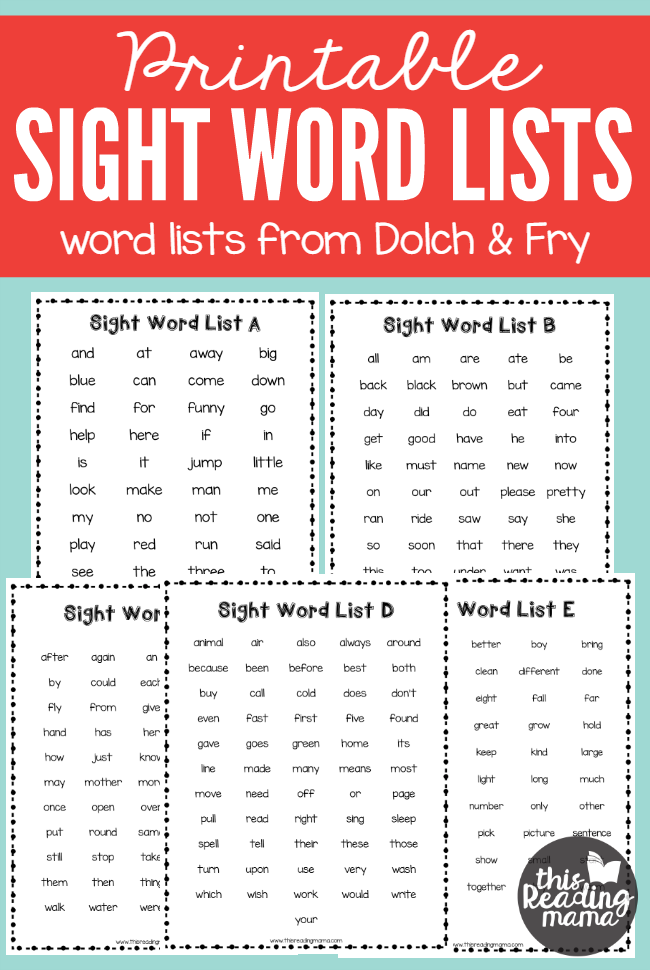 It's best to do this when you feel like you're about to forget a new word.
It's best to do this when you feel like you're about to forget a new word.
Effective memorization and timing of repetition of new information was developed by the German psychologist Hermann Ebbinghaus. According to his research, you need to repeat a new word at least 9 times in order to remember it. And it's better to do it like this:
- 15 minutes after familiarization
- One hour after last repeat
- Three hours after last repeat
- Next day
- Two days after last repeat
- Four days after last repeat
- One week after the last repetition
- Two weeks after last recurrence
- One month after last repeat
When repeating new words, it is also important to use them in context: to form a phrase or phrase with them.
In conclusion, let us briefly repeat the main points that are necessary for easy and quick memorization of new English words:
- Learn only the necessary and useful words.
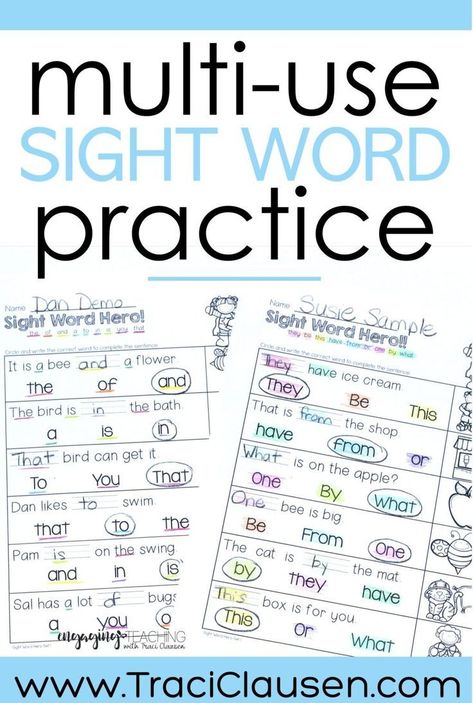
These are basic sets of high-frequency words and vocabulary from your area of interest. Don't forget about verbs, set phrases and colloquial phrases.
- Learn words in context
If you found a new word in an article, song, film, memorize it right away with the context. If you learn a “lonely” word, then come up with a context for it yourself. Do not try to learn all the meanings of a multi-valued word, take into service only the most used ones. And again, don't forget about context.
- Use the word in conversation
If there is no opportunity for conversational practice yet, come up with your own examples and situations when it would be useful for you to use this word. For effective memorization, it is desirable to meet the word in 7-9different situations.
- Use vivid associations
It doesn't matter what association comes to your mind when you meet a new word. The main thing is that it should be bright and memorable.
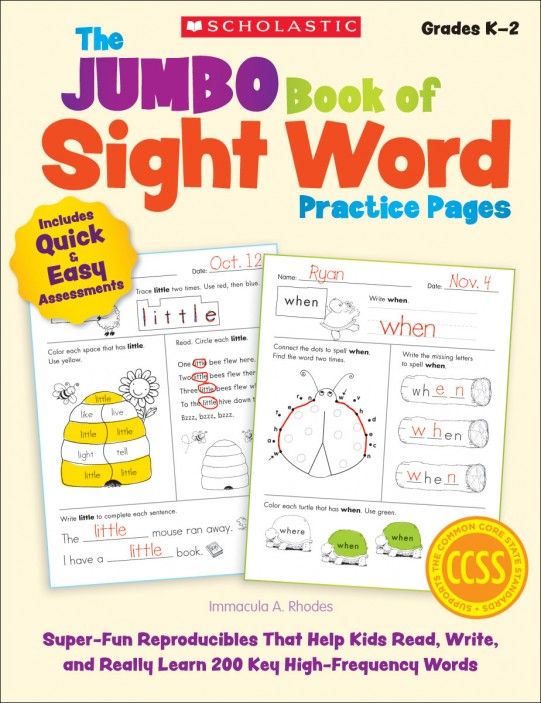 And also to match your type of thinking and “work” for you.
And also to match your type of thinking and “work” for you. - Memorize words using the interval method
It is better to repeat the learned words after a certain period of time than to cram every day: in this way the word will be deposited in long-term memory and will easily “pop up” in the right situation.
By memorizing 10 new words a day, in a month you will expand your vocabulary by 300 words, and by the end of the year - by more than 3000 words. This is enough to confidently speak English in everyday life.
How to learn English words: the best tricks ‹ Inglex
Want to learn how to learn English words quickly and easily? We will tell you how many words you need to know, where to get them from, what tools to use and how to learn all this in general. Use at least a few tips and you can expand your vocabulary.
Content:
- 1. How many English words do you need to know
- 2.
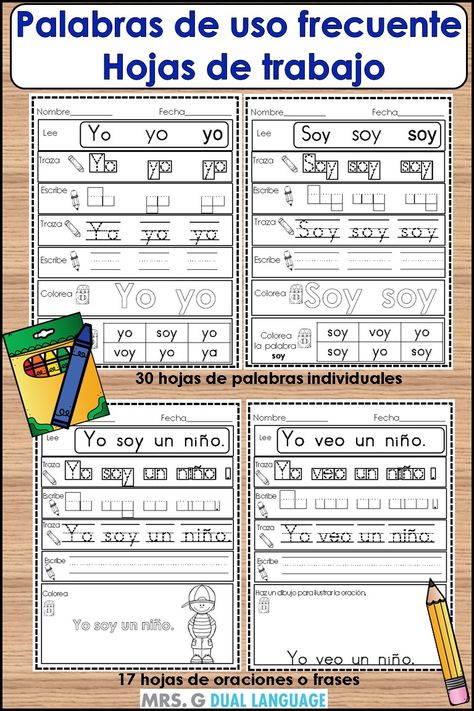 Where to get new English words
Where to get new English words - 3. Tools for learning new words
- 4. Useful tips on how to learn English words effectively
All students are interested in the question: "How to learn English words?" The more vocabulary we know, the better we understand what the heroes of our favorite English films are talking about, what is written on the Tate Modern museum plaques, and how favorable the terms of the deal are offered by our partners from the USA. Today we will give some recommendations that will help you learn new vocabulary effectively.
Before that, we advise you to watch the webinar of our methodologist Yulia on the topic “How to learn English words”.
How many English words do you need to know? It will show your approximate vocabulary which you can compare with the average scores of native speakers and English learners.
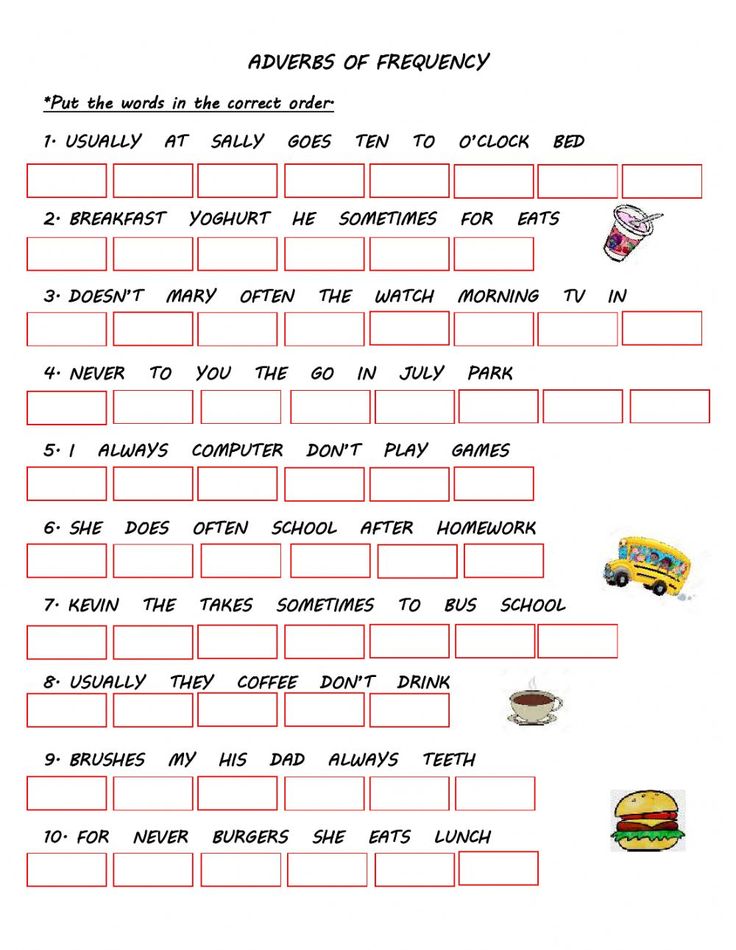 On average, 3,000 - 4,000 words will be enough to communicate on most topics.
On average, 3,000 - 4,000 words will be enough to communicate on most topics. However, we want to warn you: do not rely solely on the results of the test. It can only give a rough estimate of your vocabulary.
Our English Level Chart has a Vocabulary column that tells you how many words you need to know at each level.
And now let's find out what English words you need to learn:
- Basic vocabulary needed to understand foreign speech. There are eternal topics like "Greeting", "Family", "Food" - every person needs to know them.
- The words you need. If you need English for work, learn general business terminology or more specific industry terminology, such as for IT professionals. If you want to travel more, learn travel phrasebooks.
- Mastering all the lexical sets is impossible and pointless. Why do you need medical topics if you are not a practicing doctor? Except for watching "Doctor House" :-) Consult with an experienced English teacher, he will tell you exactly what to study.
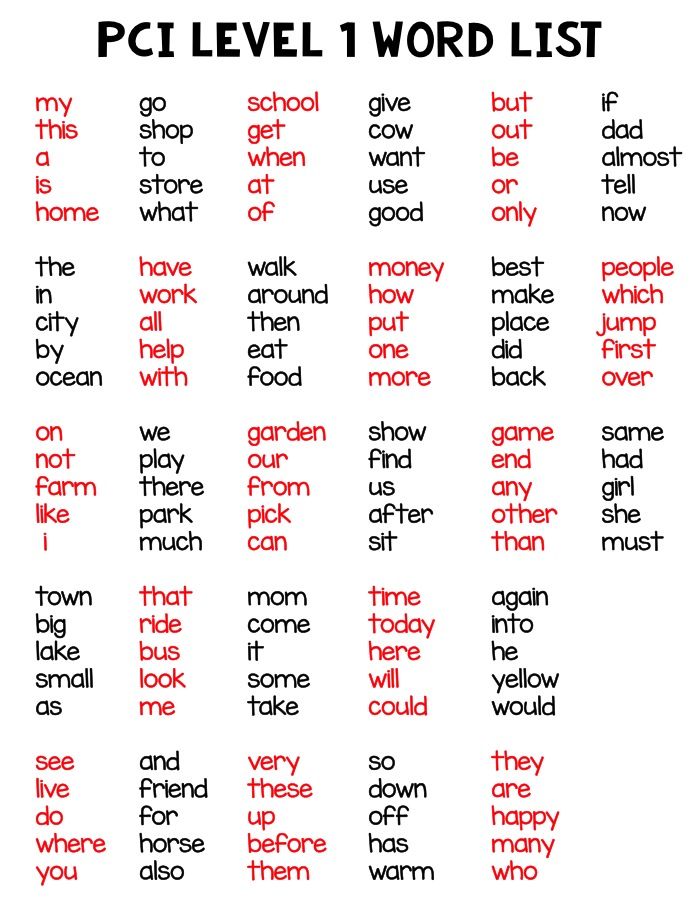
Where to get new English words
1. Favorite movies, series, songs, podcasts, books
This method is good because words are remembered in a context that is not boring for you. If you already watch films in English, you should take vocabulary from there. We advise you to use the resource ororo.tv. It is paid, but worth the money: you can watch new movies and TV shows in good quality with Russian and English subtitles. As soon as you come across an unfamiliar word, click on it and it will automatically go into your personal dictionary of new words.
The texts of most English-language songs can be found on the Amalgam resource. Or use the search bar in the browser: enter the name of the song and add the word lyrics. We also recommend a selection of podcasts, audio series and radio shows, as well as resources for downloading books online.
2. Special textbooks
Vocabulary textbooks will help you learn new words and set expressions in which they are used. The benefits of manuals are that they provide lists of words along with examples of their use, so words are learned in context. We have presented a detailed review of textbooks for learning English vocabulary, be guided by it to choose the best manual.
The benefits of manuals are that they provide lists of words along with examples of their use, so words are learned in context. We have presented a detailed review of textbooks for learning English vocabulary, be guided by it to choose the best manual.
3. Lists or dictionaries of high-frequency words
How do you know if it is worth memorizing the next new English word that you meet? It may have fallen into disuse or is rarely used. You can refer to lists of words that are most commonly used by native speakers. We recommend you lists from the Oxford Dictionary - The Oxford 3000 British Dictionary and The Oxford 3000 American Dictionary. These are the 3,000 most important words any English learner should know. They have been carefully selected by linguists and experienced teachers. You can recognize these words in the Oxford dictionary itself by the key icon.
Tools for learning new words
1. Word cards
This technique may seem old-fashioned, but it is still effective.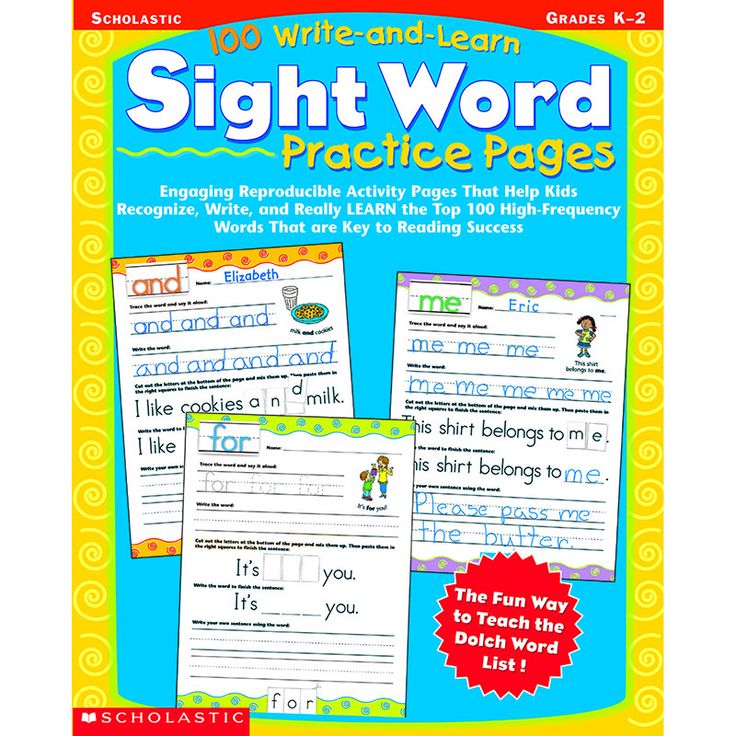 All students at least once in their lives started cards and tried to learn new vocabulary from them. It is convenient and affordable: no need to spend money, because you write them yourself, and you can take the cards with you anywhere.
All students at least once in their lives started cards and tried to learn new vocabulary from them. It is convenient and affordable: no need to spend money, because you write them yourself, and you can take the cards with you anywhere.
Before making cards, you need to choose a good dictionary that will help:
- pick up translation;
- get acquainted with typical phrases in which the word is used;
- study examples.
Then you should decide whether you will make paper or electronic vocabulary cards.
Paper cards
Color blocks are recommended (one color = one theme). Beginners can choose one of the following options:
- Write the word in English on one side of the paper, and in Russian on the other. We test our knowledge: we translate a word from Russian into English and vice versa.
- On the one hand, we write the word in English and paste the picture, on the other hand, the translation into Russian.
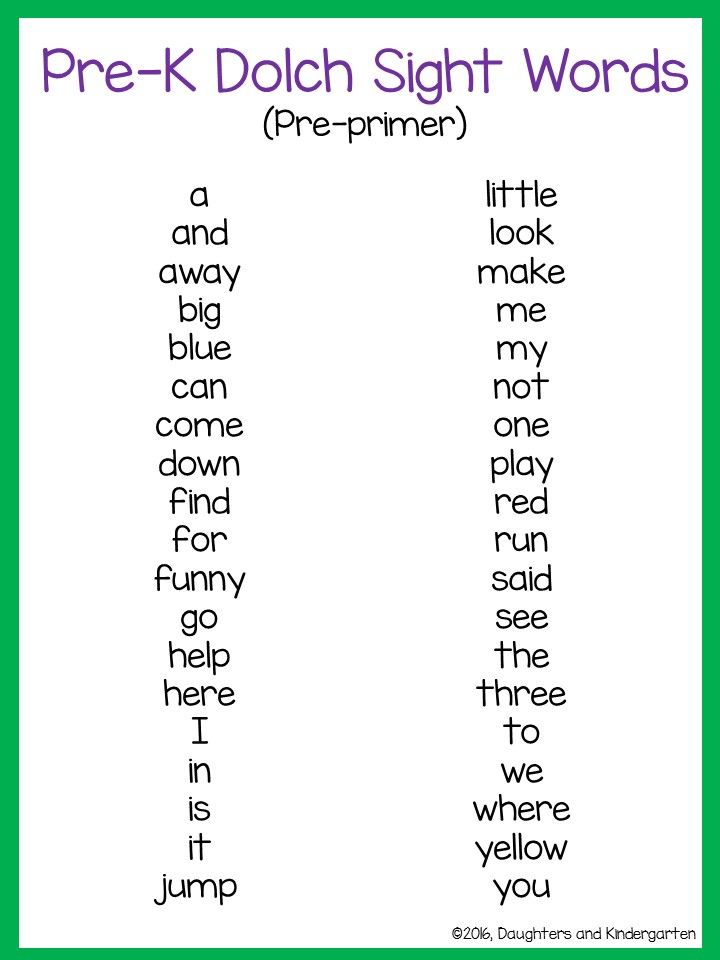 This method is well suited for people with associative thinking. In your mind, you associate a new English concept with the subject it denotes.
This method is well suited for people with associative thinking. In your mind, you associate a new English concept with the subject it denotes. - On the one hand, we write a word in English with a Russian context, on the other hand, a word in Russian without a context. When repeating vocabulary, try to translate the concept from Russian into English. And with the translation in the opposite direction, the second side of the card with the Russian context will help you.
- More experienced students are advised to use English-English dictionaries, such as the Macmillan Dictionary. On one side we write the word in English, on the other - its definition in English. You can also write synonyms and antonyms of the concept under study.
- And how to learn vocabulary? Remembering English words is best in context. Therefore, you can write on the card not just a word, but a sentence in which it is used. Examples of sentences can be found in electronic dictionaries, such as ABBYY Lingvo.
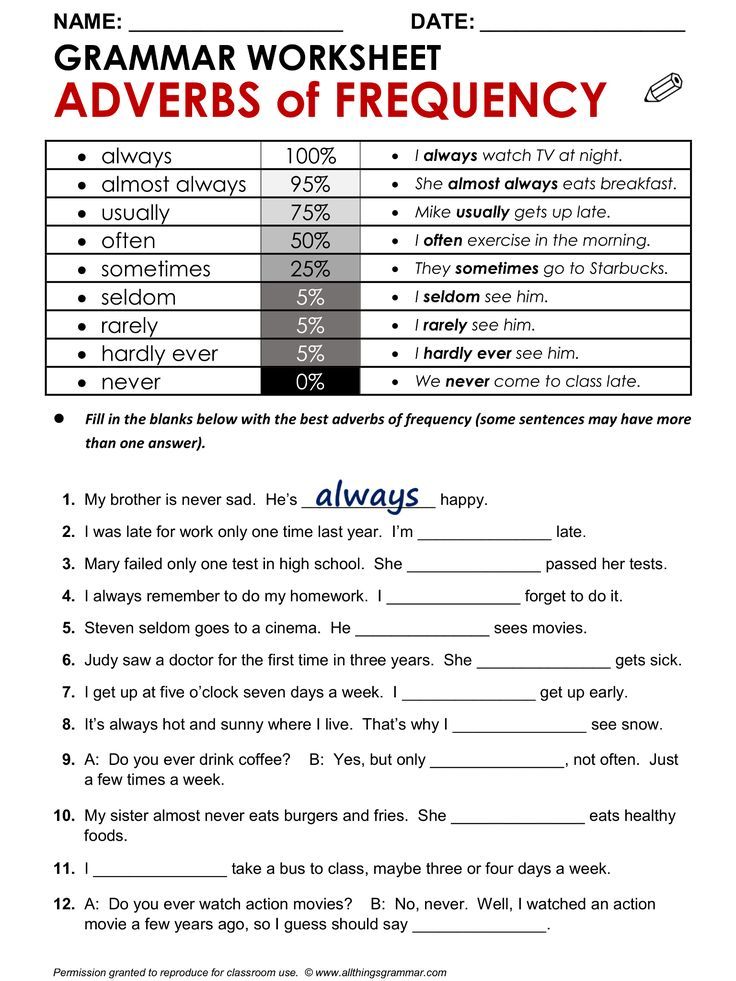
E-cards
If it's hard to get away from your computer, use your affection for good: create virtual stickers with words on your desktop and in a few days you will remember them well.
To create electronic vocabulary cards, we recommend the Quizlet service, which allows you to memorize words in different ways: choose the correct translation from four offered, fill in gaps in sentences and play games with words. Here you can also track your progress: which words are harder for you than others, how quickly you learn new vocabulary. There is an app for Android and iOS. An alternative resource is Memrise. Its free version has limited functionality, but it will be enough for compiling flashcards.
You need to constantly work with cards: review and repeat the learned vocabulary. Periodically change the cards to new ones, and after 1-2 weeks return the old ones again to repeat the words.
2. Vocabulary notebook
This method is good for those who constantly lose something: the cards are unlikely to last long :-)
You can structure the notebook in any way you like.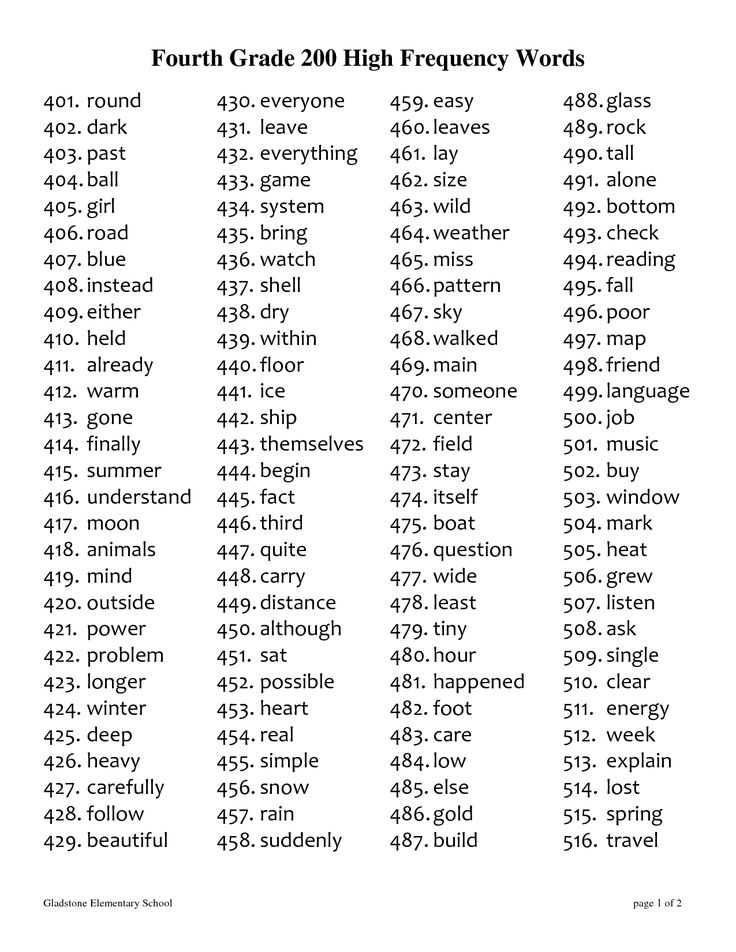 We present our version. Each page must correspond to a specific day. At the top, write the dates of the repetition of the words. In order for the studied vocabulary to be well fixed in memory, do not forget to train it. To do this, use the techniques described by us in the article "How to repeat so as not to forget anything."
We present our version. Each page must correspond to a specific day. At the top, write the dates of the repetition of the words. In order for the studied vocabulary to be well fixed in memory, do not forget to train it. To do this, use the techniques described by us in the article "How to repeat so as not to forget anything."
3. Mind map
You can easily learn English words of the same subject if you draw a mind map. Such a scheme clearly shows which topic the words belong to. In the meantime, you draw it, the vocabulary will be deposited in memory. A mind map might look like this:
We recommend using Coggle to create these mind maps. You can share the result with other people, as well as download mind maps in pdf or png.
4. Learning Websites and Apps
Study on learning resources, we recommend englishteststore.net, and in the article "5 Websites to Learn English Words" you will find even more great learning resources.
On your way to work on the subway or in line at the clinic, use every free moment to learn new words. Useful programs for your gadget can be found in the article "28 best apps for learning English on Android and iPhone".
It is enough to practice 10-20 minutes daily to feel progress.
Useful tips on how to learn English words effectively
1. Combine words by subject
How easy is it to remember English words? Groups of words related to the same topic are usually well remembered. Therefore, try to break the words into groups of 5-10 pieces and learn them.
There is the so-called Restorff effect, according to which the human brain best remembers the most prominent from a group of objects. Use this effect to your advantage: in a group of words of one subject “introduce a stranger” - enter a word from a completely different subject. For example, when studying words on the topic “Fruits”, add one word from the topic “Transport” to them, in this way your studies will become even more effective.
2. Use associations and personalization
Many students like this method: to learn a word, you need to come up with an association in Russian. For example, you need to remember the word obstinacy (stubbornness). Break it down into three syllables: ob-stin-acy, you get "stubborn as a donkey against a wall." The word shoot (to shoot) can be remembered as "the jester shoots." You can make convenient associations yourself, the main thing is that they are clear to you and easy to remember. This will make it easier for you to increase your English vocabulary.
Learning will be effective if you not only make a word association, but also visualize it: while saying the word shoot, imagine this shooting jester, let the image turn out to be as funny and memorable as possible. Even better, a dynamic picture with your personal presence: you imagine how the jester next to you shoots someone (with a water pistol to make the spectacle comedic, not tragic). The more alive the picture, the easier it will be to remember the word.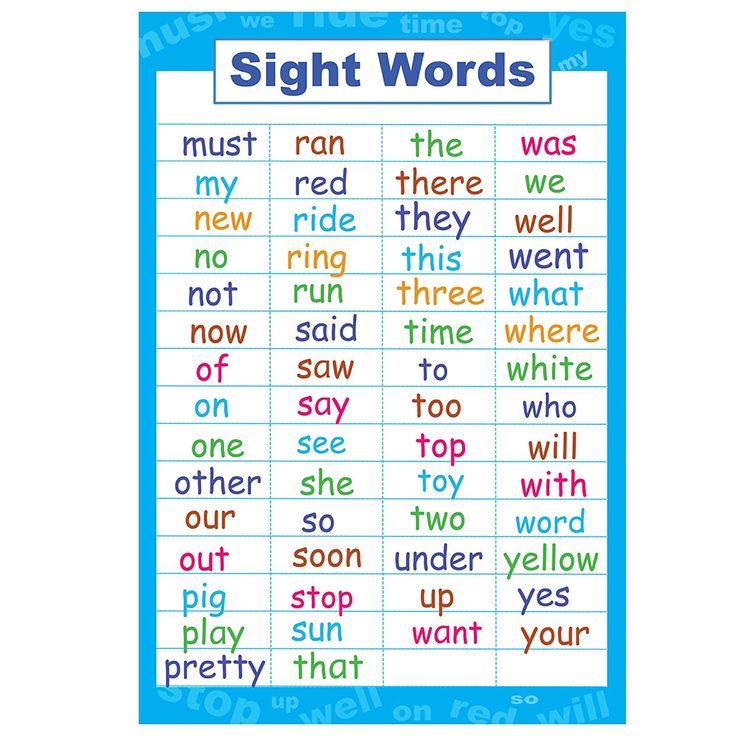
3. Use learned vocabulary in speech
How to learn English words correctly and not forget them? Are you familiar with the use it or lose it principle? In order for knowledge to remain in memory, you need to actively “use” it. It is good practice to make short stories using new words. The best remembered vocabulary is set out in a short funny text, which is written about oneself, beloved or dear to the heart of things.
If you take a course or have an English teacher, try to put new words into the conversation as often as possible: the more times you say a word, the better you will remember it. Do not forget about spelling: try to use new words in writing.
Tell me and I forget. Teach me and I remember. Involve me and I learn.
Tell me and I will forget. Teach me and I will remember. Make me do it and I'll learn.
Learn new words and apply them immediately with the Conversation Course.
4. Regularly test your knowledge
It is useful to take various tests to determine the level of vocabulary from time to time.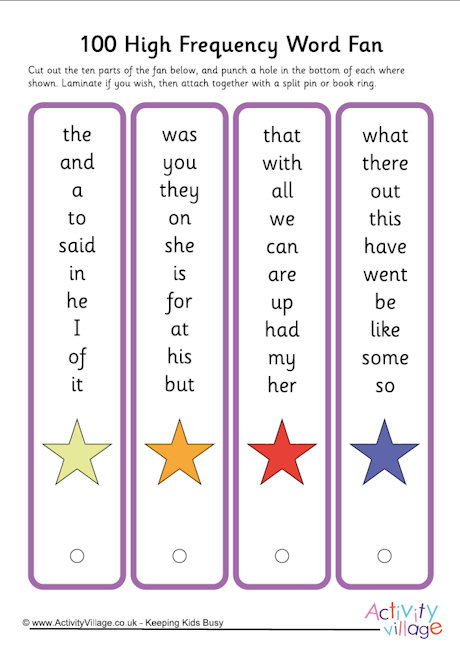 For example, great picture quizzes (a joy for visuals and kids) are on the Vocabulary for learners of English page. After passing such a test, you will immediately see what is deposited in your memory, and which topics or words need to be repeated.
For example, great picture quizzes (a joy for visuals and kids) are on the Vocabulary for learners of English page. After passing such a test, you will immediately see what is deposited in your memory, and which topics or words need to be repeated.
5. Follow your daily plan
We have already told you how many words to learn per day. Recall that for the average person, it is best to learn 5-10 words a day. Be sure to follow your plan for learning new vocabulary to see progress.
6. Use entertaining learning methods
At engvid.com, native speakers explain complex information in a light, entertaining way, thanks to which new material is well remembered. On newsinlevels.com, every piece of news is adapted for different levels of English proficiency, and explanations are given for all difficult words.
You can expand your English vocabulary through fun activities such as crossword puzzles, gallows games, etc. A lot of fun is provided on the Have Fun Learning English and Vocabulary exercises pages.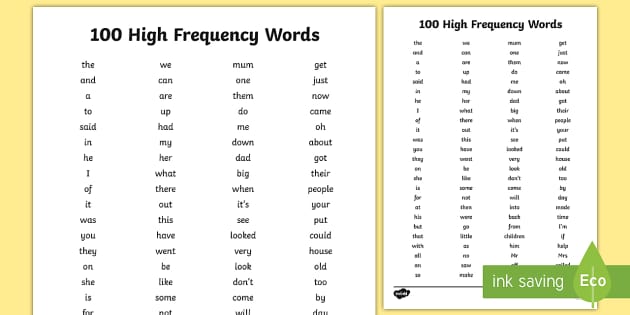
7. Develop your memory
It is impossible to remember anything if you do not have a good memory. Learning a language in itself is a good exercise for our brain and improves memory. But to make it easier to remember, you can use the tips from our article “How to improve memory. Best Advice for English Learners.
8. Consider your type of perception of information
Not all methods are equally good for you. Don't try to apply everything at once. Try text, video, or audio formats and choose the ones that help you pick up new words faster. So you will come to your author's mix of techniques.
You can understand whether you are auditory, visual or kinesthetic by reading our article "Learn English according to the type of information perception."
The main thing - do not forget to move from theory to practice. Not only read useful tips on how to memorize English words quickly and easily, but also actively use them in everyday life, then you will not have to puzzle over how to improve your level of knowledge.